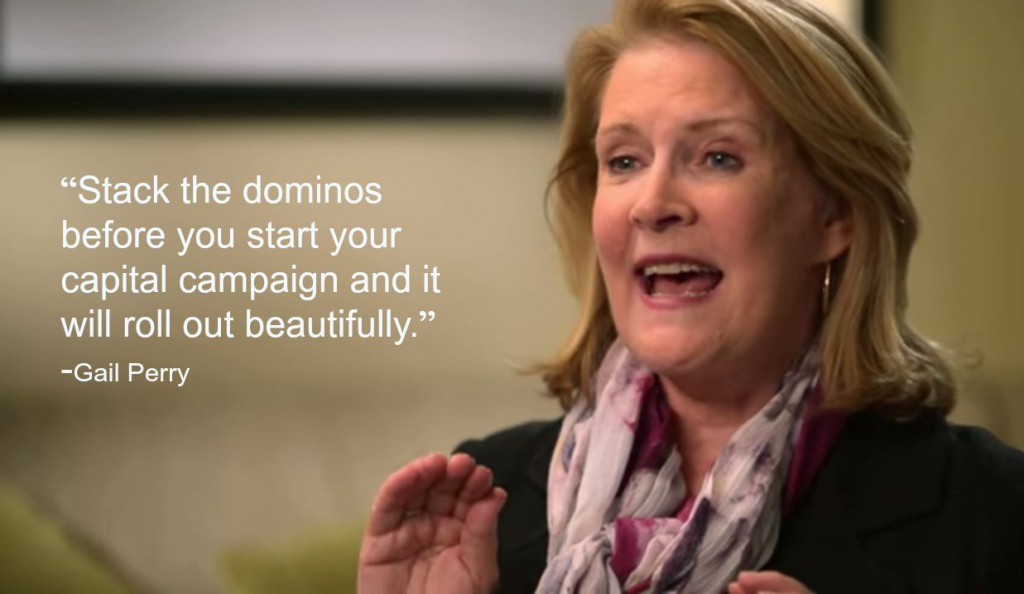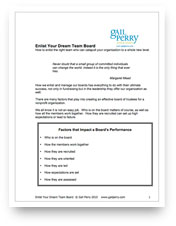If you’re a board member serving a nonprofit, you’re likely facing some tough decisions right now.
Federal funding cuts, economic shifts, and donor uncertainty are creating an incredibly challenging landscape for many organizations.
Many programs are at risk. Revenue streams are shrinking. And leadership board members are making difficult, strategic decisions.
But consider this —your nonprofit has been through challenges before.
And with strong, smart leadership, you can navigate this moment and come out stronger than ever.
Please. Now is the time to lead! But by all means, lead with thoughtfulness, courage, and a long-term vision that can protect your organization’s long-term future.
Some boards are stepping up right now, making tough smart choices that will protect and position their organizations for long-term sustainability.
Others are reacting differently—cutting everything in an effort to stay afloat.
However, the most successful boards are looking for a path forward that will balance fiscal responsibility with a commitment to their mission and their people.
Now more than ever, your nonprofit needs each board member to step forward.
Here are three key ways board members can approach decision-making during this time of financial uncertainty while keeping their organization’s future bright.
1. Step It Up and Lead with a Steady Hand
Board members, your time is now. This is when your leadership is most needed. The worst thing a board member can do during a financial crisis is to step back and disengage.
Your nonprofit needs your thoughtful attention. Above all, it needs active decision-makers who are willing to roll up their sleeves and guide through this moment.
Renew your personal commitment to your organization to support its mission, no matter what effort it takes. Educate yourself thoroughly on the financial realities your nonprofit is facing.
Be willing to ask the hard questions. Explore creative solutions. You need to realize that thoughtful decisions take time, so be prepared to dedicate the hours necessary to weigh the implications of every choice.
The most successful nonprofits are led by boards that stay engaged, stay strategic, and keep their eyes on the horizon. Your leadership today will shape your nonprofit’s success tomorrow.
2. Keep the Bigger Picture in Mind
It’s easy to focus on short-term survival, but as a board member, your role is to help your organization see beyond the immediate challenges.
Will your nonprofit be in a strong position a year from now? Five years from now? Will the decisions you make today set your organization up for long-term growth and resilience?
Nonprofits that react out of fear—cutting too deeply, too quickly—can find themselves struggling to rebuild when funding returns and financial conditions improve. We saw this during the pandemic – when, out of fear, many organizations simply stopped fundraising.
This type of fear-based short-term thinking had tough long-term consequences
Losing fundraising trained staff, dismantling programs, and reducing donor outreach can create lasting setbacks.
Even if programs are canceled and staff funding evaporates, try to take a balanced approach. Are there other resources to help make it through?
Look to make smart financial decisions while protecting your nonprofit’s ability to grow and serve its mission in the future.
3. Invest in Fundraising—It’s Your Lifeline
Above all, do not cut your fundraising investments. And in times of fiscal challenges, do not lay off your fundraising team.
Remember the revenue relationship. Your fundraisers are responsible for keeping a significant portion of revenue flowing.
If you reduce fundraising efforts now, you’re not just cutting costs—you’re cutting off future cash flow.
A strong, fully staffed development team will keep your nonprofit financially stable in the months and years ahead.
Think about it this way: When donors stop hearing from you, they start supporting other organizations.
Relationships that have taken years to cultivate can quickly fade. Once lost, those donors may never return.
Instead of scaling back, what strategies can you invest in that will keep your donors closely engaged? How can you increase donor retention? Are there new revenue streams you haven’t explored? What fundraising tactics could be optimized to bring in immediate support?
We’ve been saying over and over, this is the time to draw your donors close and closer. It can be a survival strategy for your mission!
And if short-term financial relief is what’s needed most, there are solutions.
Consider drawing from reserves or endowment funds rather than making cuts that could permanently damage your ability to raise money and grow.
The Bottom Line: The Decisions You Make Now Will Shape the Future
Yes, these are terribly challenging times. But your nonprofit is not without options, and you are not without power.
The strongest organizations are those that make smart, strategic decisions—decisions that prioritize long-term sustainability over short-term reactionary cuts.
If you really think about it, wow, it is the perfect time to move forward boldly. Your donors want to see a light at the end of the tunnel. They want you to offer hope for the future.
Go ahead and seek expert guidance. Leverage your available resources. And lead your organization with the confidence that the choices you make today will ensure a bright and sustainable future.
Want to explore ways to strengthen your nonprofit’s financial future? The Gail Perry Group offers expert fundraising strategy, board training, and capital campaign guidance to help nonprofits build resilience and grow even in challenging times. Let’s talk about how we can help.
.






